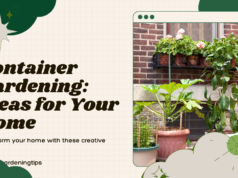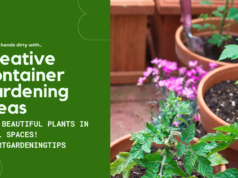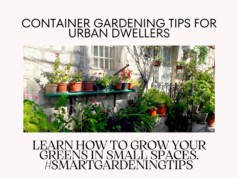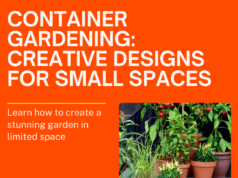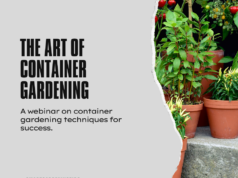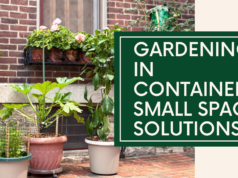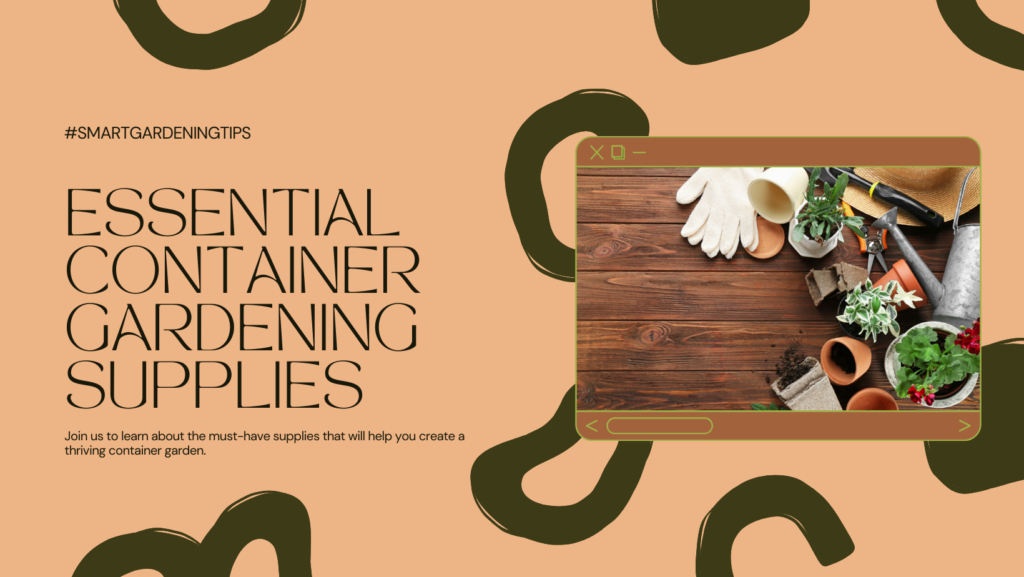
Welcome to the world of container gardening! Whether you have limited outdoor space or simply want to bring a touch of nature into your home, container gardening is the perfect solution. To embark on this green journey, it’s essential to have the right container gardening supplies. These tools and materials will help you create a thriving oasis of plants that will brighten your space and soothe your soul.
Key Takeaways:
- Container gardening is a versatile solution for adding greenery to limited spaces.
- The right supplies are essential for successful container gardening.
- Choose containers based on factors like size, material, and drainage.
- Quality soil and fertilizers play a crucial role in the plant’s growth.
- Having essential tools, such as a trowel and pruning shears, is vital for maintenance.
Choosing the Right Containers for Your Garden
When it comes to container gardening, finding the perfect containers for your plants is essential. The right containers not only provide a suitable environment for your plants to thrive, but they also add aesthetic value to your garden. In this section, we’ll explore the key factors to consider when choosing containers for your garden.
Size Matters
One of the first considerations when selecting containers is the size. Different plants have varying space requirements for their roots to spread and grow. Ensure that the containers you choose are spacious enough to accommodate the root systems of your plants. As a general rule, larger plants need bigger containers, while smaller plants can thrive in more compact spaces. Remember, ample room for root growth will contribute to healthier and stronger plants.
Material Selection
The material of the containers can also impact the overall health and well-being of your plants. Clay and terracotta containers provide good aeration and drainage, preventing waterlogged soil. However, they may dry out more quickly, necessitating more frequent watering. Plastic containers, on the other hand, retain moisture better and are generally more lightweight. Consider the specific needs of your plants and choose containers that align with those requirements.
Match Your Style
Container gardening is not just about the plants; it’s also an opportunity to express your personal style and enhance your outdoor space. Consider the aesthetics of your container choices and how they complement your garden design. There are a wide variety of container designs available, ranging from traditional to modern, rustic to sleek. Choose containers that reflect your taste and create visual harmony in your garden.
“The right containers not only provide a suitable environment for your plants to thrive, but they also add aesthetic value to your garden.”
Choosing the right containers for your garden is an important step towards creating a successful container garden. By considering factors such as size, material, and aesthetics, you can ensure that your plants have the ideal home to flourish. In the next section, we’ll explore the benefits of different container types for various plants, helping you make informed choices for your garden.
Benefits of Different Container Types for Various Plants
When it comes to container gardening, the choice of container type is crucial in ensuring the optimal growth and health of your plants. Different plants have different needs, and selecting the right container can help meet those needs effectively. Let’s explore the benefits of various container types and how they benefit different plants:
Ceramic and Terracotta Containers
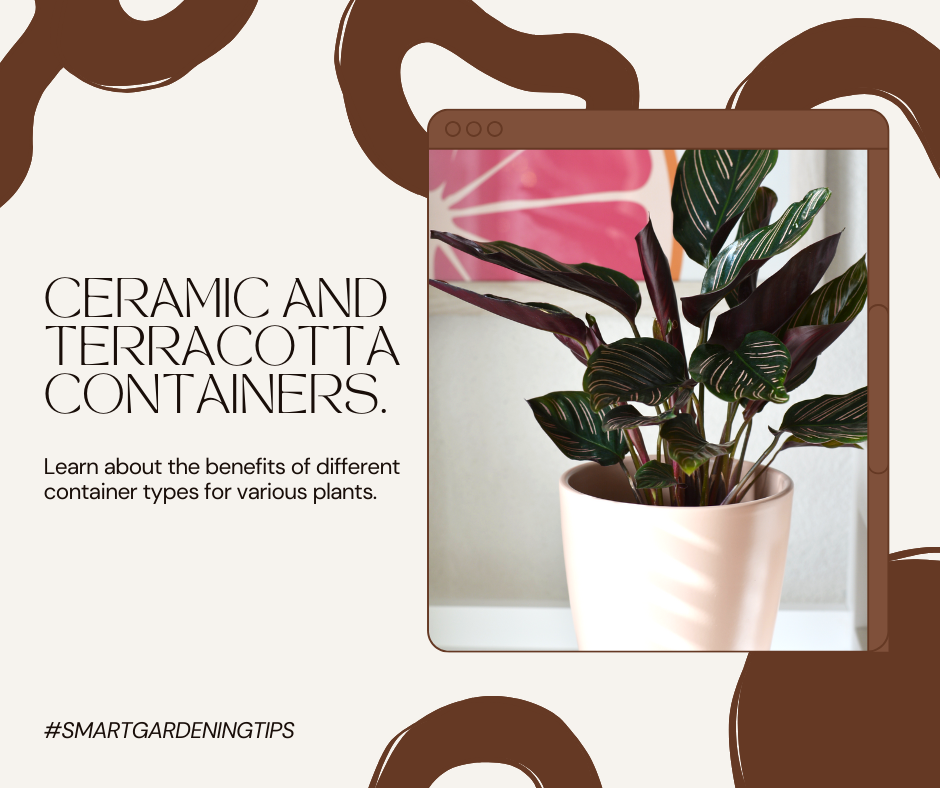
One popular choice for container gardening is ceramic and terracotta containers. These containers are not only aesthetically pleasing but also offer several advantages. Their porous nature allows for better air circulation and moisture evaporation, preventing overwatering and root rot. Additionally, the weight of these containers provides stability, making them suitable for larger plants. Consider using ceramic and terracotta containers for herbs, succulents, and plants that prefer well-drained soil.
Plastic Containers
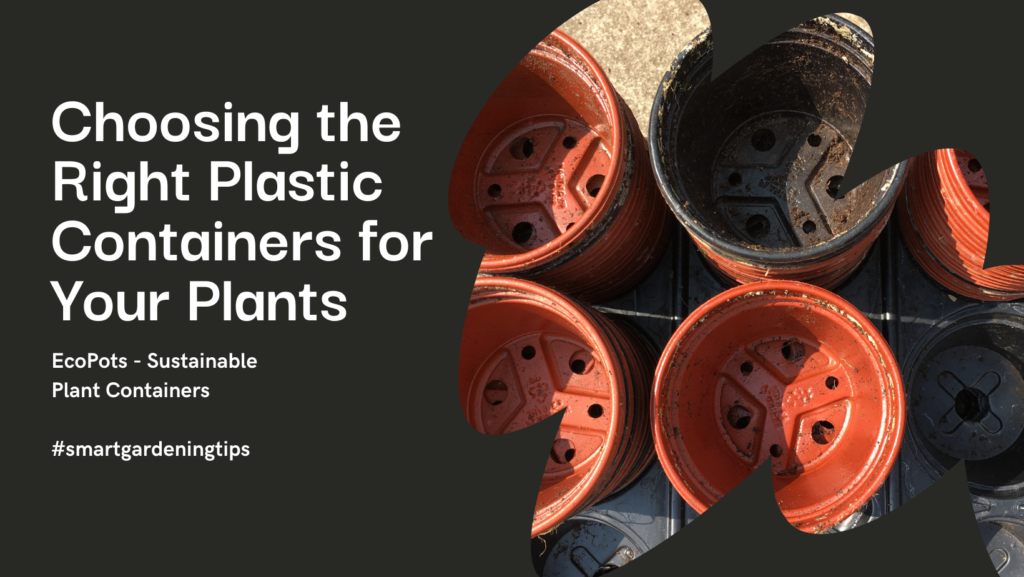
Plastic containers are lightweight, durable, and affordable, making them a practical option for container gardening. Their lightweight nature allows for easy mobility and reduces the strain on balconies and decks. Plastic containers also retain moisture well, ensuring that your plants stay hydrated for longer periods. These containers are suitable for a wide range of plants, including flowering annuals, vegetables, and herbs.
Wooden Containers
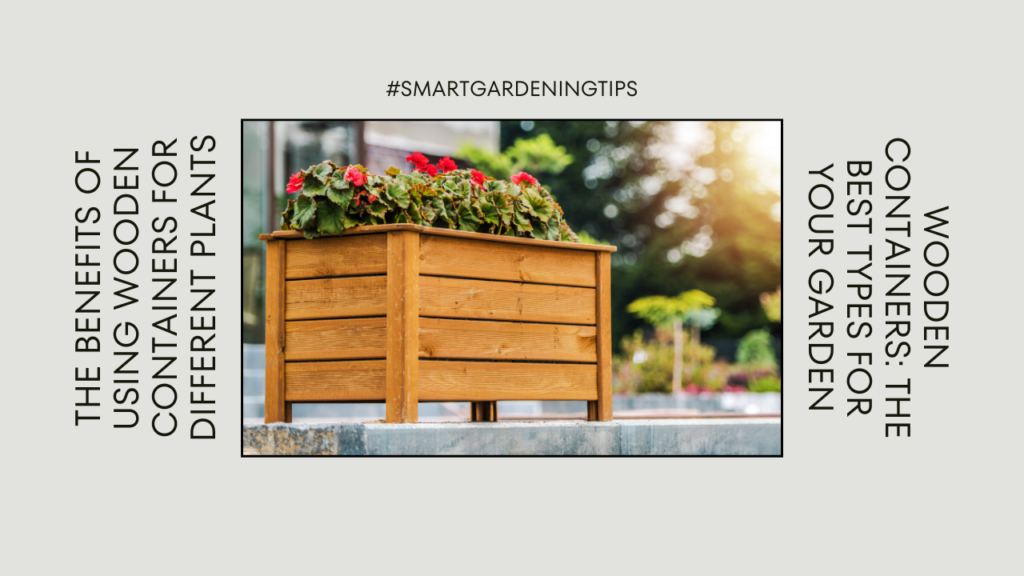
Wooden containers add a natural and rustic charm to your container garden. They provide excellent insulation, helping to regulate soil temperature and preventing rapid temperature fluctuations. The insulation properties make wooden containers suitable for plants that are sensitive to extreme temperatures. However, it’s important to choose rot-resistant woods, such as cedar or redwood, to ensure the longevity of the containers. Consider using wooden containers for ornamental plants, herbs, and shallow-rooted vegetables.
Hanging Baskets
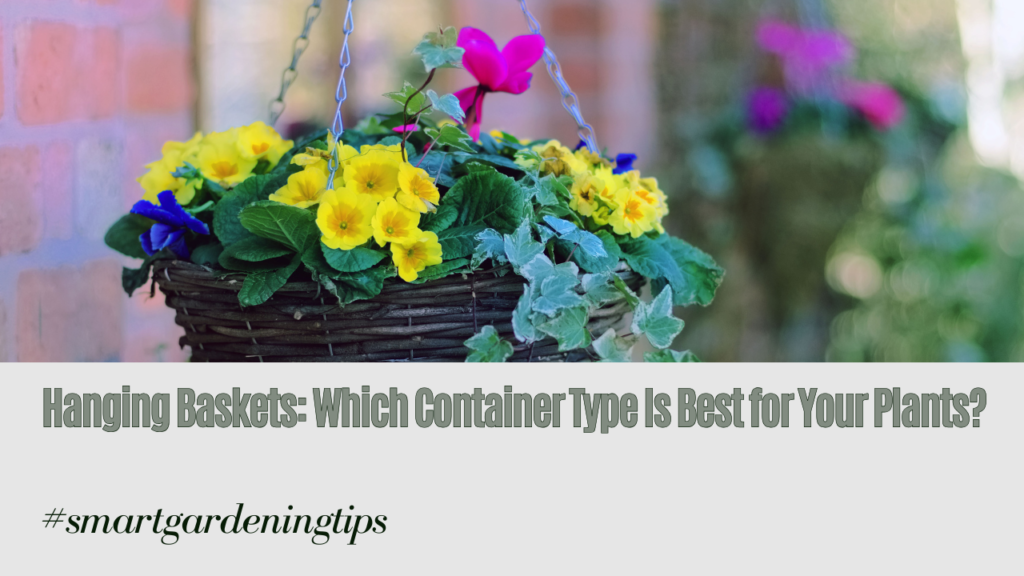
Hanging baskets are a popular option for those with limited space. They allow you to maximize vertical space and add visual interest to your container garden. Hanging baskets come in various materials, such as plastic, wire, or woven materials, offering flexibility in design options. They are ideal for trailing and vining plants, such as petunias, ivy, and ferns, adding a cascading effect to your garden.
As you can see, choosing the right container type is essential for the success of your container garden. Consider the specific needs of your plants and select containers that provide the necessary benefits for their growth. Whether you opt for ceramic, plastic, wooden containers, or hanging baskets, the right container type can make a significant difference in the overall health and beauty of your plants.
Quality Soil and Fertilizers for Container Gardening
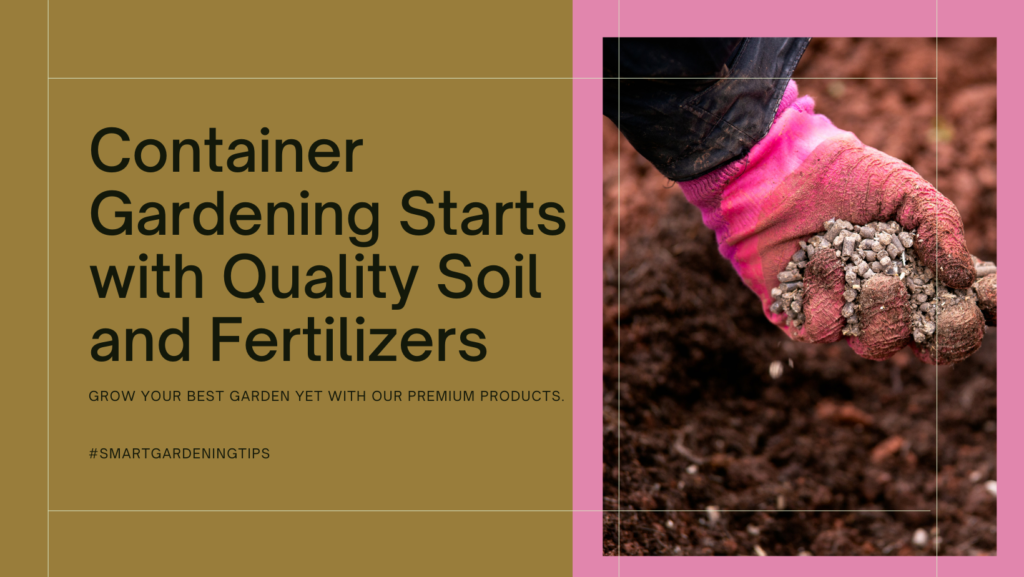
When it comes to successful container gardening, the quality of the soil and fertilizers you use is paramount. Plants rely on high-quality soil for proper root development, nutrient absorption, and overall health. Let’s explore the significance of soil quality and the importance of selecting the right fertilizers for your container plants.
Finding the Right Soil
Container gardening requires a well-draining soil mix that retains moisture while providing adequate aeration for the roots. Opt for a high-quality potting mix specifically designed for container gardening. These mixes are formulated with the right balance of organic matter, peat moss, perlite, and vermiculite to ensure proper water retention and drainage.
It’s essential to choose a potting mix that suits the specific needs of the plants you’re growing. Some plants, such as succulents, prefer a sandy mix with excellent drainage, while others, like tropical plants, thrive in a mix with higher moisture retention.
The Role of Fertilizers
In addition to quality soil, fertilizers provide essential nutrients that container plants need for healthy growth. The limited space in containers restricts the availability of nutrients, making regular fertilizing necessary.
Before applying fertilizers, it’s crucial to understand the nutritional requirements of your plants. Nitrogen (N), phosphorus (P), and potassium (K) are the primary macronutrients plants need, along with secondary nutrients like calcium, magnesium, and sulfur.
Choosing the right fertilizer ratio is vital for promoting specific growth, such as foliage development, flowering, or fruiting. Fertilizers with a higher nitrogen content are ideal for promoting leafy growth, while those with a higher phosphorus and potassium content support flower and fruit production.
Testing and Monitoring
While high-quality soil and fertilizers are essential, it’s equally important to monitor the nutrient levels and pH of your container garden. Periodically test the soil to ensure it provides an optimal growing environment for your plants.
Regularly monitor the health of your plants and look for signs of nutrient deficiency or excess. Yellowing leaves, stunted growth, and lack of flowering can indicate a nutrient imbalance. Adjusting the fertilization regimen or soil composition can help restore the balance and ensure the long-term health of your container plants.
| Fertilizer Type | Primary Nutrients | Benefits |
|---|---|---|
| Organic Fertilizers | Nitrogen, Phosphorus, Potassium | Slow-release nutrients, improve soil structure |
| Water-Soluble Fertilizers | Nitrogen, Phosphorus, Potassium | Quick nutrient availability, easy application |
| Controlled-Release Fertilizers | Nitrogen, Phosphorus, Potassium | Consistent nutrient release, reduced frequency of application |
Remember, providing high-quality soil and the right fertilizers tailored to your plants’ needs will ensure a bountiful container garden. Along with proper watering and maintenance, your plants will thrive and bring beauty to any space.
Essential Container Gardening Supplies
As a container gardener, having the right tools at your disposal is essential for successful planting and maintenance. With the proper equipment, you can ensure the health and vitality of your plants. Let’s explore the essential tools you should have on hand for your container garden.
Garden Trowel
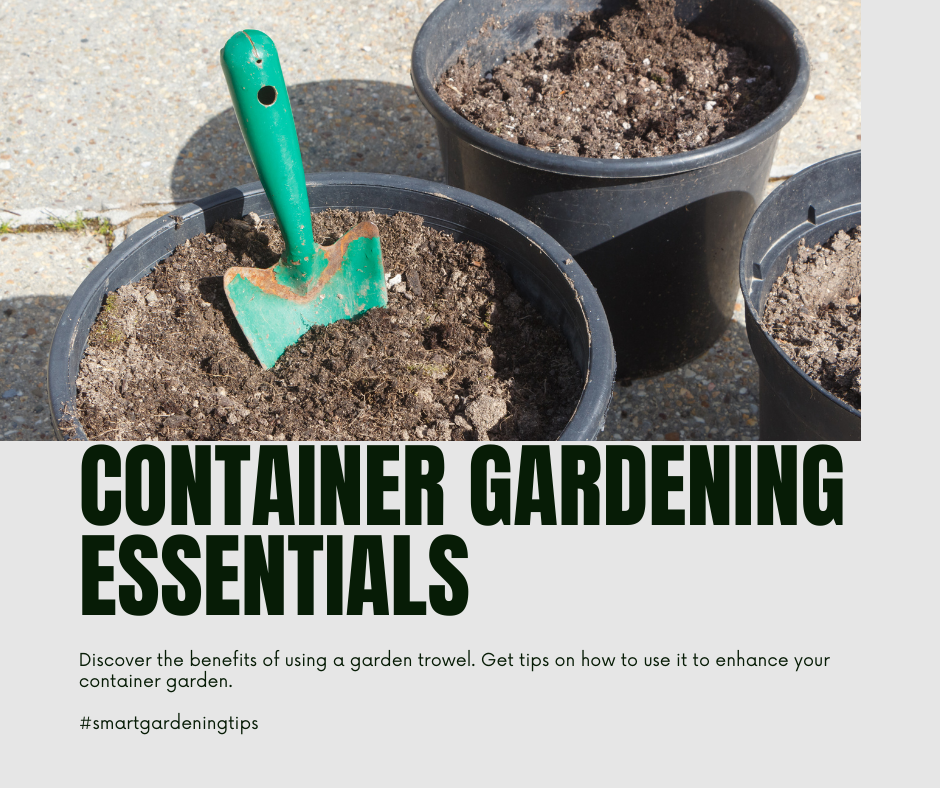
A garden trowel is a must-have tool for container gardening. This handheld tool is perfect for digging small holes to plant your seeds or transplant seedlings into your containers. Its compact size allows for precise digging, making it easier to position your plants for optimal growth.
Hand Pruners
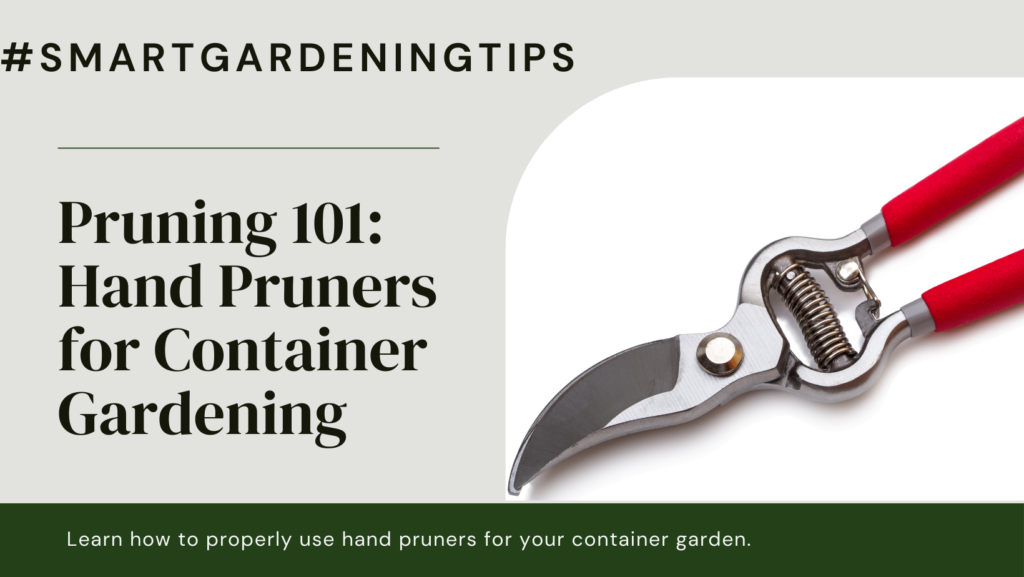
Hand pruners, also known as secateurs, are indispensable for maintaining the health and shape of your container garden plants. They are great for trimming and pruning overgrown branches, helping to promote better airflow and prevent disease. Be sure to choose a pair of hand pruners that are comfortable to grip and have sharp blades for clean cuts.
Watering Can or Hose
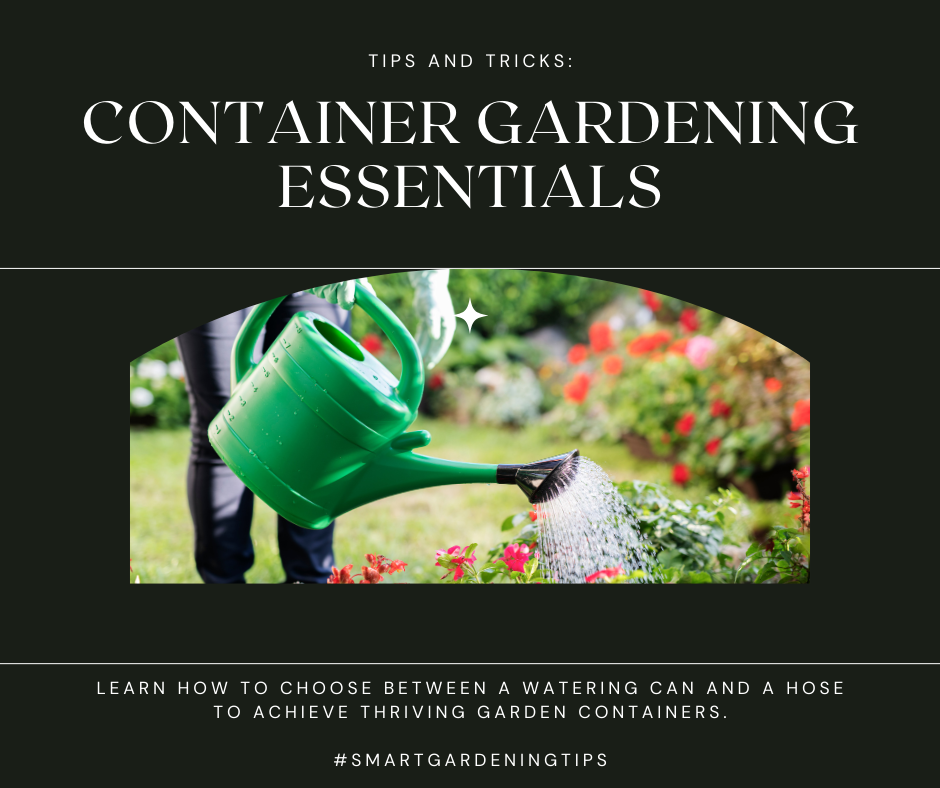
Proper watering is crucial for container gardens, and having a dependable watering can or hose is essential. Choose a watering can with a long spout for precise watering, allowing you to target the root zone without splashing water on the foliage. Alternatively, a garden hose with a spray nozzle attachment can provide efficient and convenient watering, especially for larger container gardens.
Soil Scoop
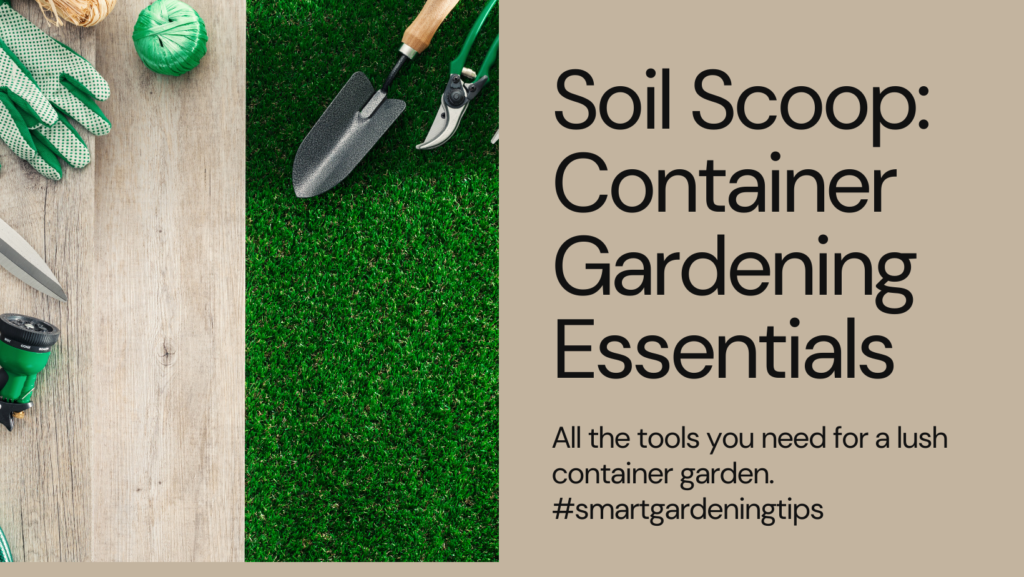
A soil scoop is a handy tool for filling containers with potting soil. Its deep, rounded shape allows for easy scooping and transferring of soil without spillage. With a soil scoop, you can quickly and efficiently fill your containers, ensuring proper soil depth for your plants’ root systems.
Pruning Shears
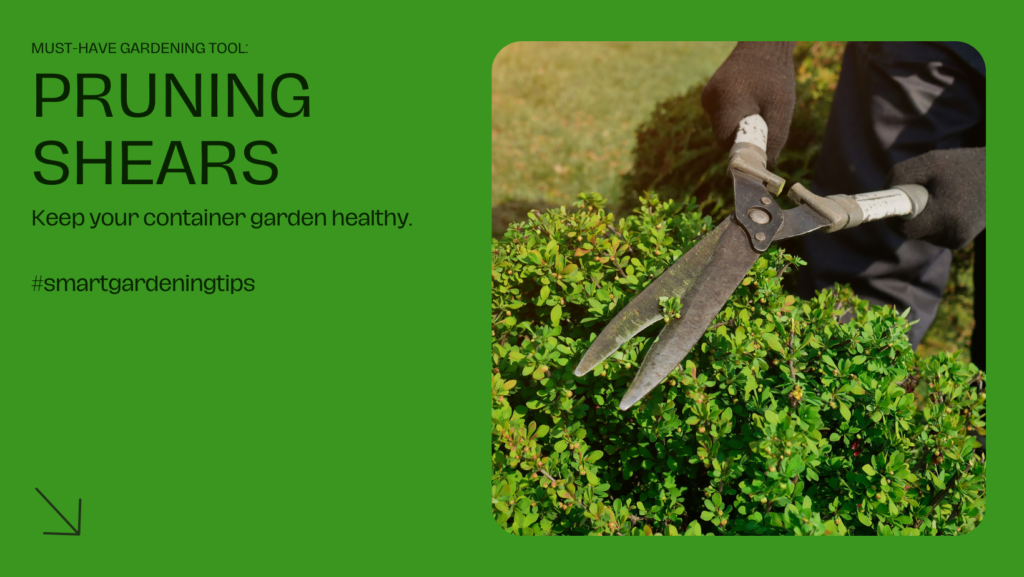
Pruning shears are ideal for maintaining the overall shape and appearance of your container garden. These scissors-like tools are perfect for deadheading spent flowers, removing damaged or diseased foliage, and trimming unruly branches. Invest in a high-quality pair of pruning shears that provides a comfortable grip and precise cutting action.
Fertilizer Spreader
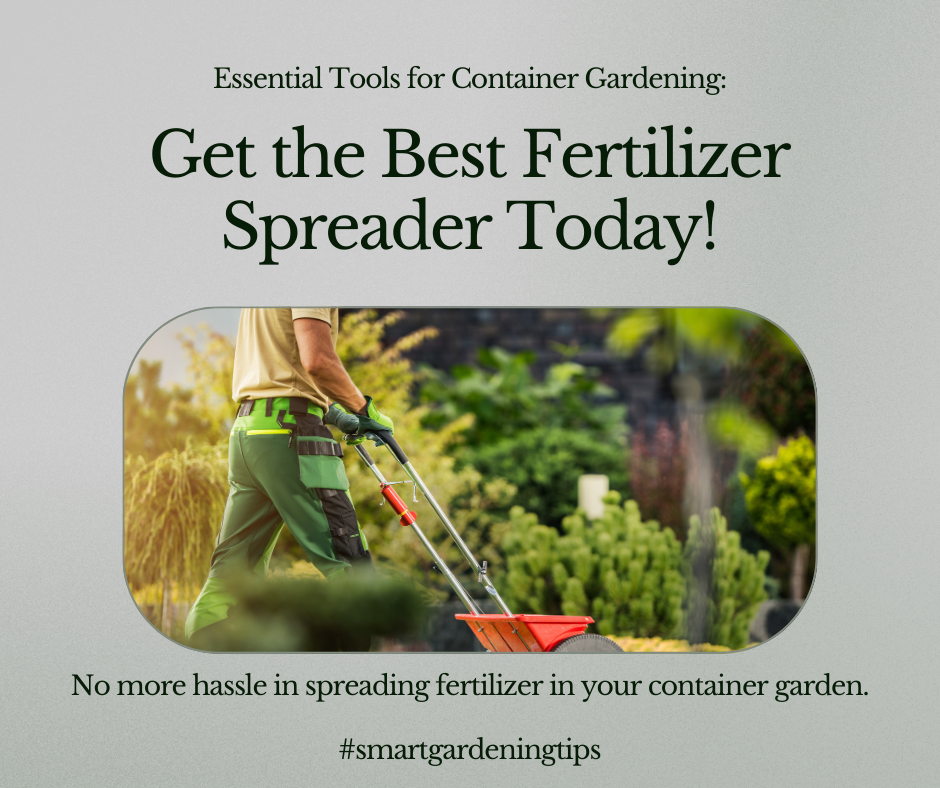
Fertilizing your container garden is essential for ensuring the plants receive the necessary nutrients for healthy growth. A fertilizer spreader is a practical tool that helps distribute granular fertilizers evenly throughout the soil. With a spreader, you can ensure that each plant receives the appropriate amount of nutrients, promoting balanced and vibrant growth.
Hand Cultivator
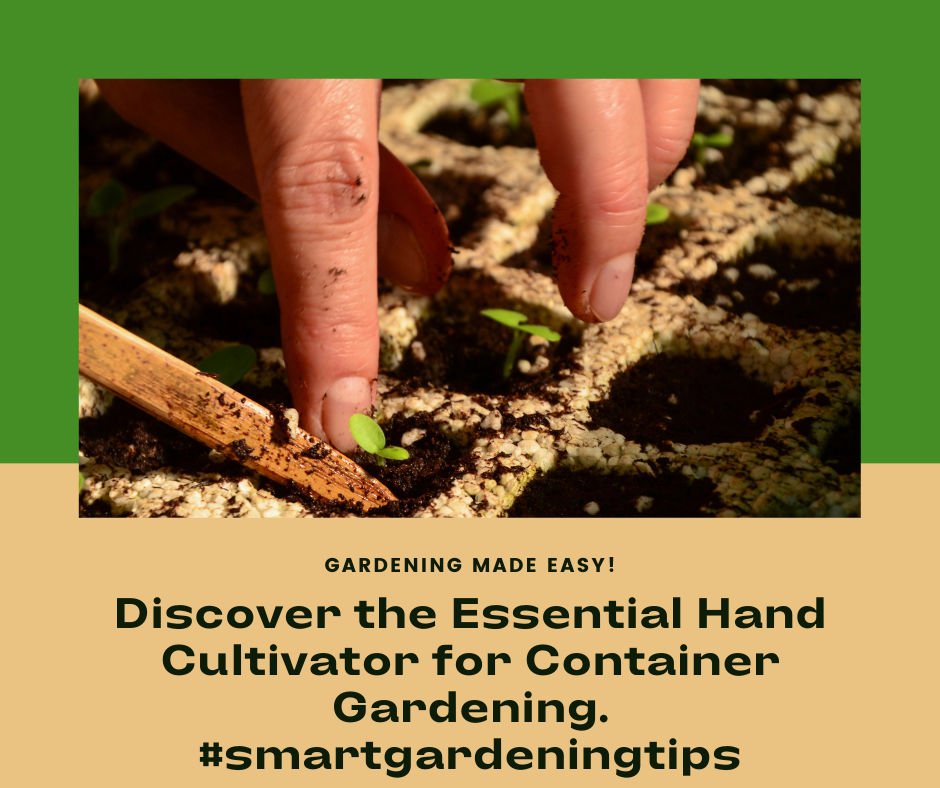
A hand cultivator is a versatile tool that helps loosen and aerate the soil in your containers. Its pronged design allows for efficient weeding and breaking up compacted soil, promoting better root development and nutrient absorption. A hand cultivator is particularly useful for small-scale gardening in containers.
These are just a few of the essential tools every container gardener should have in their arsenal. Depending on your specific gardening needs, there may be additional tools that can enhance your container gardening experience. Invest in high-quality tools that are durable, comfortable to use, and suitable for your container garden size. With the right tools, you’ll be well-equipped to create a thriving and beautiful container garden.
Selecting the Perfect Plants for Your Container Garden
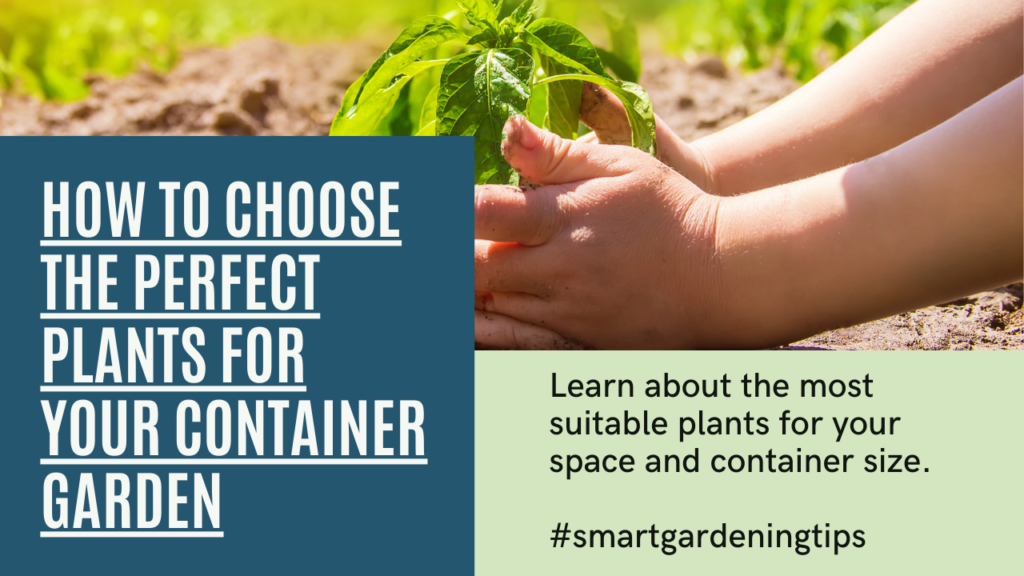
When it comes to container gardening, choosing the right plants is crucial for the success of your garden. The plants you select should not only complement your personal style and preferences but also thrive in the container environment. By considering important factors such as sunlight requirements, space limitations, and growth habits, you can create a stunning container garden that flourishes throughout the seasons.
Matching Plants with the Right Containers
Selecting the perfect plants for your container garden starts with finding the right containers to house them. Consider the size, material, and drainage capabilities of each container.
For smaller plants, opt for smaller containers and vice versa. This ensures that the plants have enough space to grow and develop a healthy root system. Additionally, consider the material of the containers. Terracotta pots offer excellent breathability but may dry out the soil faster, requiring more frequent watering. Plastic pots retain moisture better but may not provide sufficient airflow for the roots. Ceramic and fiberglass containers strike a balance between breathability and moisture retention.
It’s essential to choose containers with proper drainage holes to prevent waterlogging, which can lead to root rot. If your favorite container doesn’t have drainage holes, you can create some yourself using a drill or hammer and nail.
Once you have selected the appropriate containers, it’s time to choose the plants that will thrive in them. Consider the following:
- Light requirements: Different plants have varying levels of sunlight requirements. Some thrive in full sun, while others prefer partial shade. Place plants with similar light requirements together in a container to ensure uniform growth.
- Size and space: Account for the mature size of the plants you choose. Avoid overcrowding by selecting plants that will not outgrow the container or compete for resources.
- Complementary aesthetics: Consider the colors, textures, and growth habits of the plants to create an eye-catching and harmonious container garden. Pair plants with contrasting foliage or complementary bloom colors for a visually appealing display.
- Seasonal interest: Think about the changing seasons and select a mix of plants that will provide year-round interest in your container garden. Choose plants with different bloom times, foliage colors, and textures to create a dynamic and ever-changing display.
By carefully considering these factors, you can ensure that the plants you select will thrive in your container garden, creating a beautiful and vibrant space.
“The love of gardening is a seed once sown that never dies.” – Gertrude Jekyll
| Plant | Light Requirements | Growth Habit | Mature Size |
|---|---|---|---|
| Petunia | Full Sun | Trailing | 6-12 inches |
| Begonia | Partial Shade | Upright | 8-16 inches |
| Salvia | Full Sun | Upright | 12-24 inches |
| Hosta | Partial Shade | Mounding | 8-24 inches |
The table above showcases a selection of popular container garden plants, along with their light requirements, growth habits, and mature sizes. Use this as a guide to help you make informed decisions when selecting plants for your container garden.
Remember, experimenting with different plant combinations is part of the fun of container gardening. Don’t be afraid to get creative and showcase your personal style through your plant choices. With careful consideration and proper care, your container garden will become a flourishing oasis.
Proper Watering and Drainage Techniques
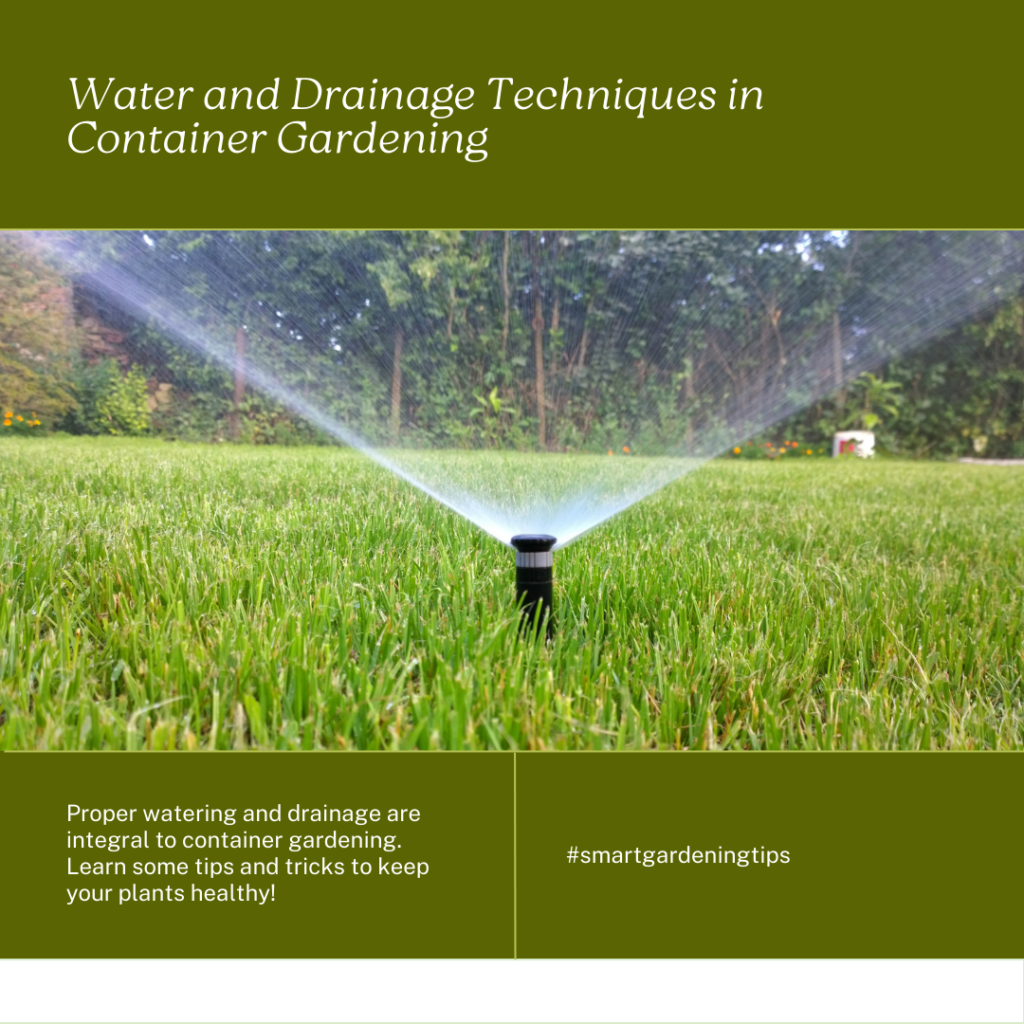
Proper watering and drainage techniques are essential for maintaining the health and vitality of your container garden plants. By following these guidelines, you can ensure optimal growth and prevent issues such as root rot and overwatering.
Watering Schedules
Creating a consistent watering schedule is key to providing your plants with the right amount of moisture. The frequency of watering will vary depending on factors such as the type of plant, container size, and environmental conditions.
As a general rule of thumb, you should water your container garden when the top inch of soil feels dry to the touch. This helps prevent waterlogged soil and ensures that the roots have access to oxygen.
Watering Techniques
When watering your container garden, it’s important to water deeply and evenly. This encourages the roots to grow downwards, promoting strong and healthy plant development. Avoid shallow watering, which can lead to weak root systems.
To ensure thorough watering, pour water slowly and evenly onto the soil. Allow the water to penetrate the soil, reaching the roots. Avoid getting water on the leaves as this can increase the risk of fungal diseases.
Adequate Drainage
Proper drainage is crucial for preventing waterlogged soil, which can lead to root rot and other plant health issues. Ensure that your containers have drainage holes at the bottom to allow excess water to escape.
Additionally, using a well-draining potting mix can help improve drainage. Look for potting mixes specifically formulated for container gardening, as they often contain ingredients like perlite or vermiculite that promote good drainage.
It’s essential to monitor the drainage of your containers regularly. If you notice that water is not draining properly, you may need to adjust the number or size of the drainage holes or consider repotting your plant into a container with better drainage.
Remember, proper watering and drainage are the foundations for a successful container garden. By following these techniques, you can provide your plants with the ideal environment for healthy growth and flourishing beauty.
| Watering Tips | Drainage Tips |
|---|---|
| Water when the top inch of soil is dry | Ensure containers have drainage holes |
| Water deeply and evenly | Use a well-draining potting mix |
| Avoid watering the leaves | Monitor drainage regularly |
| Adjust watering frequency as needed | Make necessary adjustments to drainage holes |
Maintaining and Enhancing Your Container Garden
Once your container garden is flourishing, it’s important to know how to maintain and enhance its beauty. With proper care and attention, you can enjoy a thriving and aesthetically pleasing container garden. Here are some routine care and maintenance tips to help you keep your plants healthy and vibrant.
Care and Maintenance Tips
1. Watering:
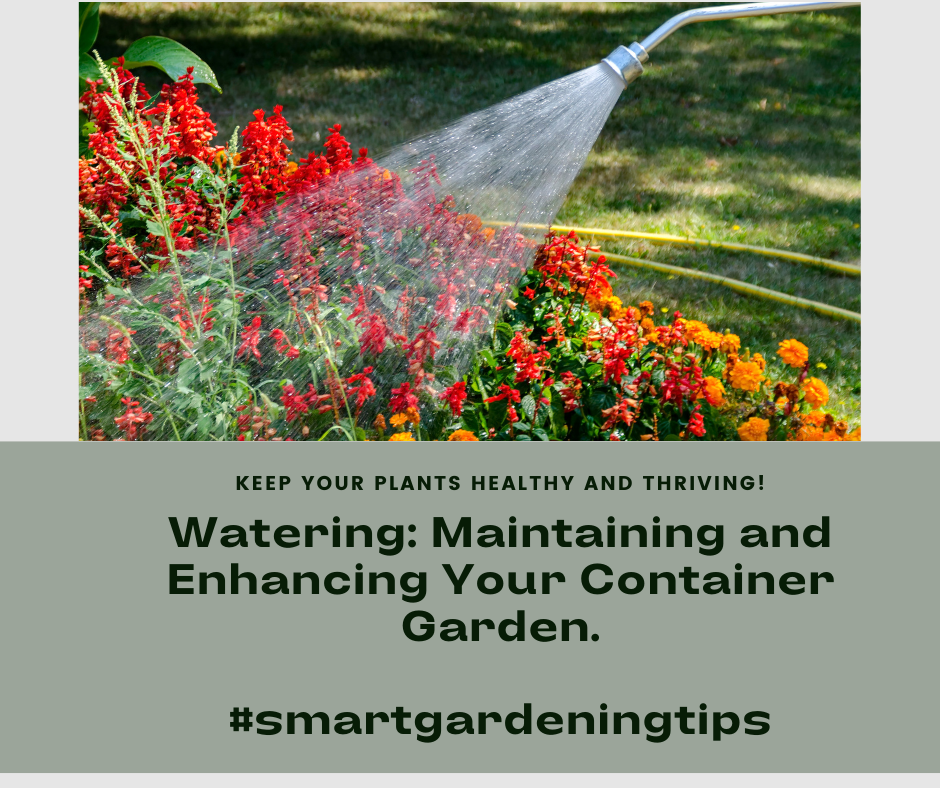
Proper watering is crucial for the health of your container garden. Be sure to check the moisture level of the soil regularly and water as needed. **Maintaining** a consistent watering schedule will prevent under- or over-watering, which can stress your plants. Remember to adjust the watering frequency based on weather conditions and the specific needs of your plants.
2. Fertilizing:
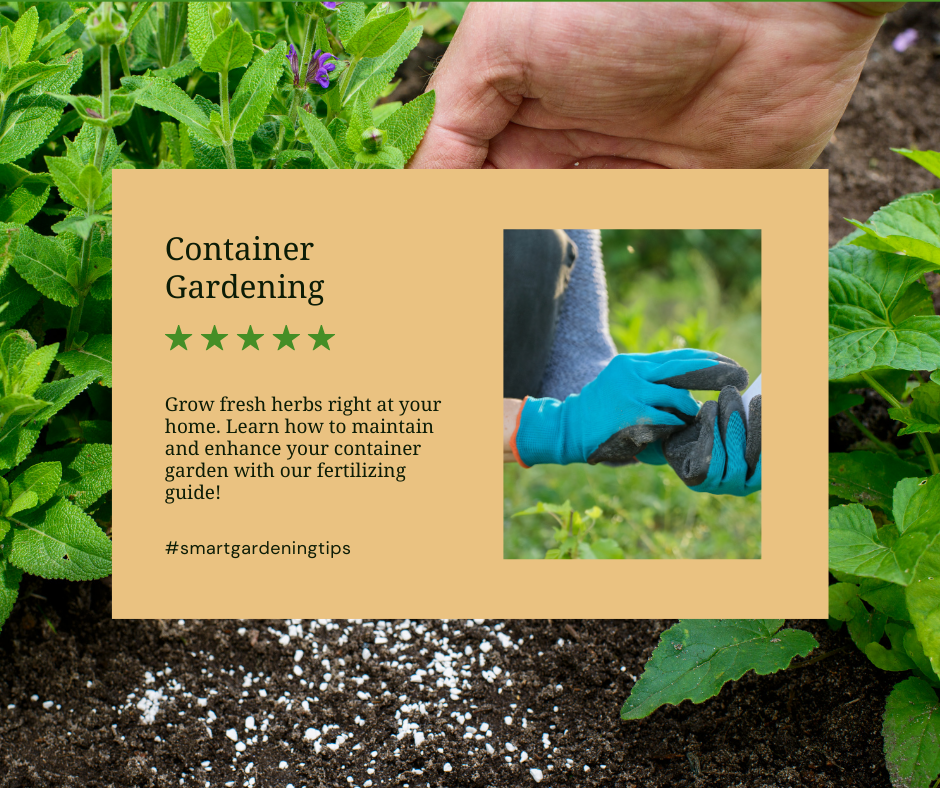
Regular fertilization promotes the growth and vitality of your container garden. Choose a high-quality fertilizer specifically formulated for container plants. Follow the instructions on the package for the correct application method and frequency. **Enhancing** your soil with nutrients will ensure that your plants receive the essential elements they need for optimal growth.
3. Pruning and Deadheading:
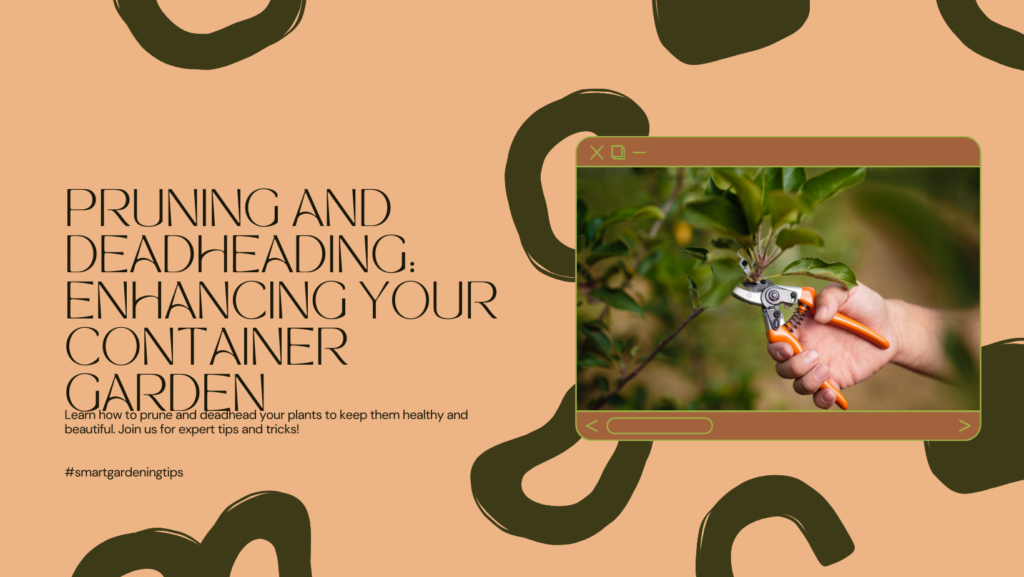
Pruning and deadheading are essential tasks for maintaining the shape and appearance of your container plants. **Maintaining** a neat and tidy garden not only enhances its aesthetic appeal but also promotes healthy growth. Remove any dead or diseased foliage, trim back overgrown branches, and pinch off spent flowers to encourage new blooms.
4. Pest Control:
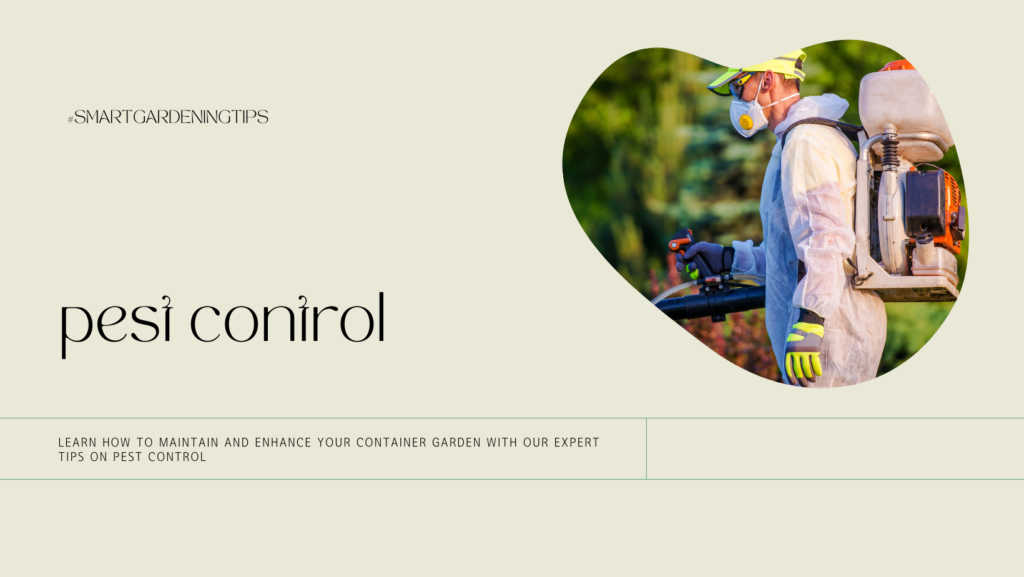
Keep an eye out for common garden pests that can damage your container plants. **Maintaining** a vigilant pest control routine will help prevent infestations and minimize damage. Use organic pest control methods whenever possible, such as introducing beneficial insects or using natural pest repellents.
5. Seasonal Refresh:
**Enhancing** the aesthetics of your container garden can be as simple as swapping out plants or accessories to match the season. Consider adding seasonal flowers or decorative elements to brighten up your display. Experiment with different color schemes and textures to create a visually appealing arrangement that reflects the time of year.
Ways to Enhance Aesthetics
In addition to routine care and maintenance, there are several ways to enhance the aesthetics of your container garden. Here are a few ideas to **maintain and enhance** the beauty of your garden:
- Choose containers in various sizes, shapes, and materials to create visual interest.
- Use decorative mulch or gravel to add texture and contrast to your planters.
- Introduce trellises or stakes to support climbing plants and create a vertical element.
- Consider incorporating sculptures, ornaments, or decorative lighting for a personalized touch.
Stay Engaged and Enjoy the Rewards
**Maintaining and enhancing** your container garden is an ongoing process that requires dedication and attention to detail. By following these tips and getting creative with your garden design, you can create a stunning oasis that brings you joy year-round. Remember to stay engaged with your plants, observing their needs, and making adjustments as necessary. With a little TLC, you’ll enjoy the rewards of a thriving and beautiful container garden.
| Plant Care Checklist | Frequency |
|---|---|
| Watering | As needed, check soil moisture regularly |
| Fertilizing | Every 4-6 weeks |
| Pruning and Deadheading | Regularly, as needed |
| Pest Control | Regular monitoring and immediate action |
| Seasonal Refresh | At the start of each season |
Troubleshooting Common Container Gardening Issues
While container gardening can be a rewarding and enjoyable experience, it’s not without its challenges. In this section, we’ll address some common issues that may arise and provide you with solutions to help troubleshoot and overcome them. Whether you’re a beginner or an experienced gardener, these tips will help ensure that your container garden thrives.
Pest Infestation
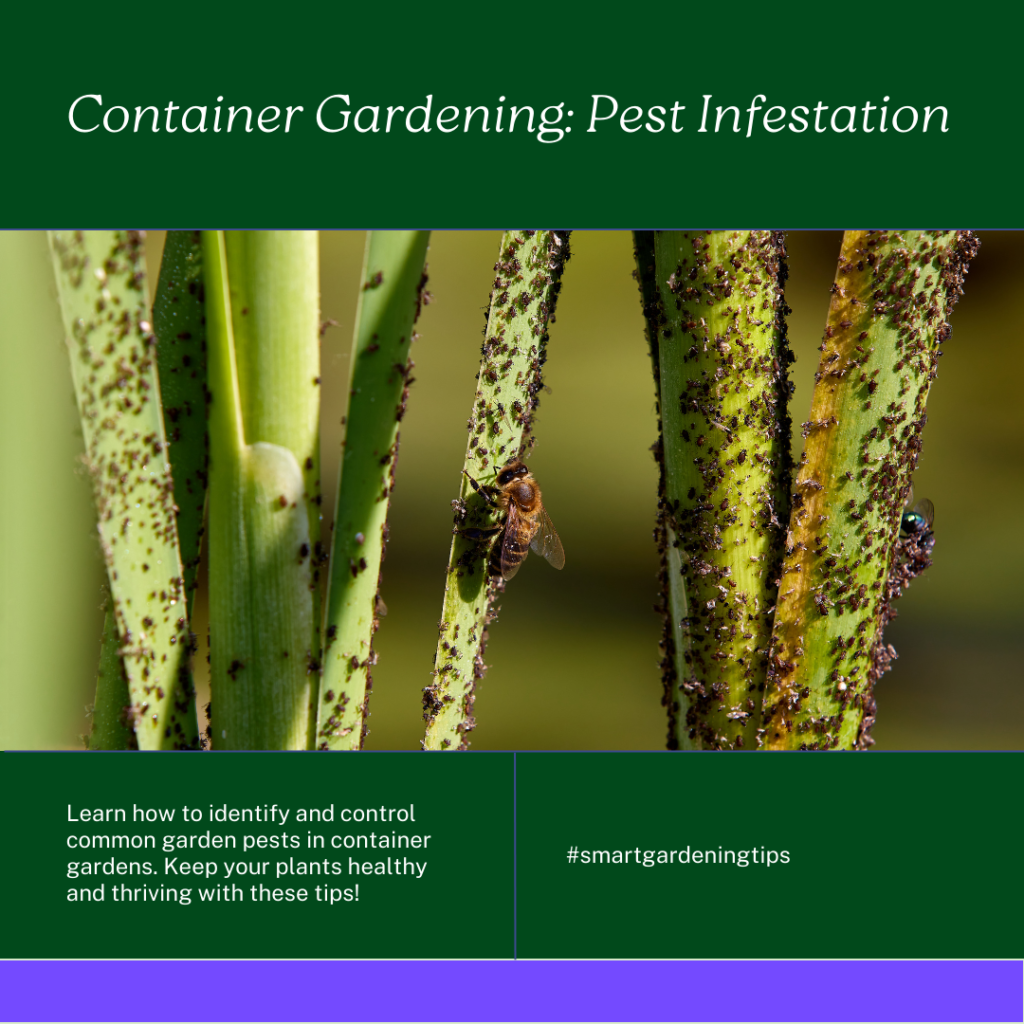
Pests can wreak havoc on your container garden and damage your plants. To prevent infestation, regularly inspect your plants for signs of pests such as aphids, mealybugs, or spider mites. If you notice any pests, remove them by hand or use organic pest control methods. Additionally, you can encourage beneficial insects like ladybugs and lacewings to help keep pests at bay.
Fungal Diseases
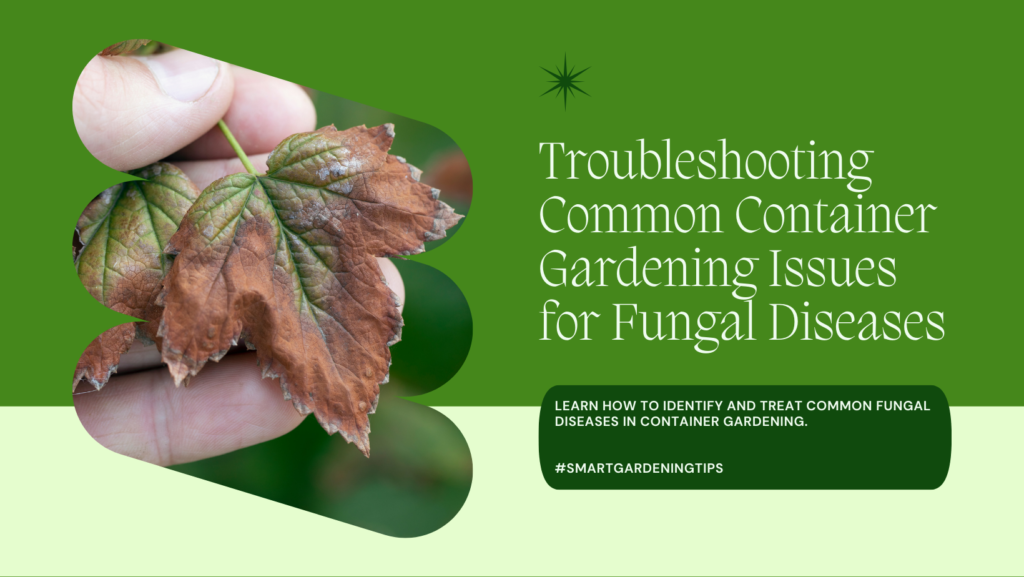
Container gardens are prone to fungal diseases such as powdery mildew or root rot. To prevent these diseases, make sure your plants have adequate air circulation by spacing them apart. Avoid overwatering and water your plants at the base to minimize moisture on the leaves. If you notice any signs of fungal infection, remove the affected leaves or plants and treat them with organic fungicides.
Inadequate Drainage
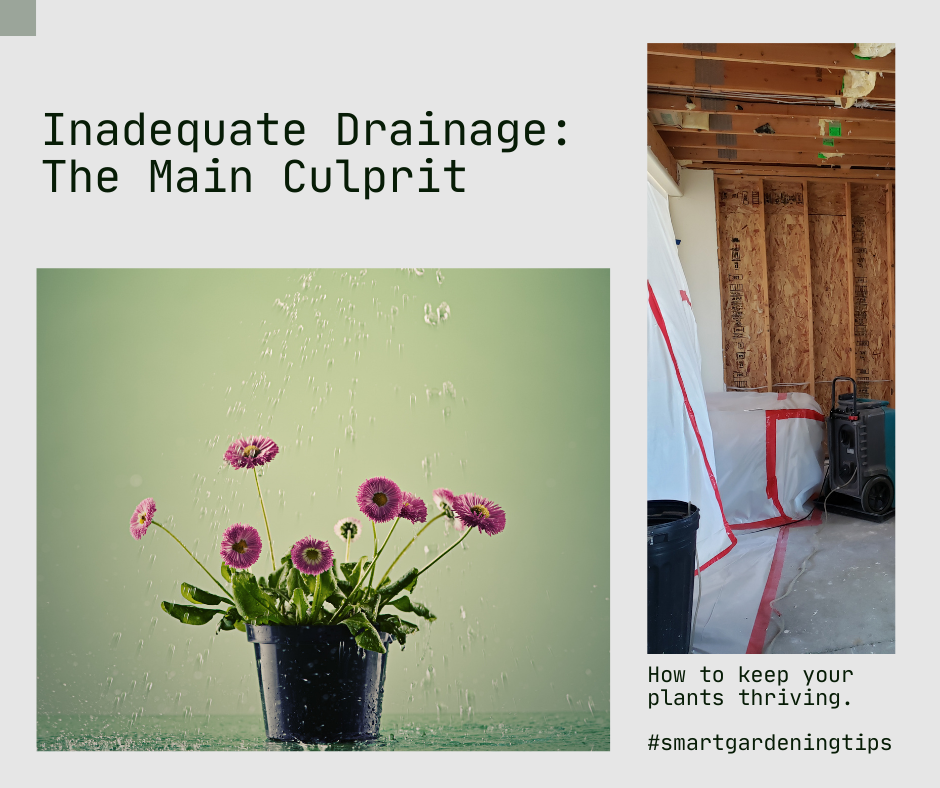
Poor drainage can lead to waterlogged roots, causing root rot and stunted growth. Ensure that your containers have sufficient drainage holes at the bottom. Use a well-draining potting mix and avoid compacting the soil. If you find that your container doesn’t have proper drainage, consider repotting your plant into a container with better drainage or adding a layer of gravel at the bottom to improve water flow.
Troubleshooting Tip: Elevate your containers on pot feet or bricks to further enhance drainage.
Over or Underwatering
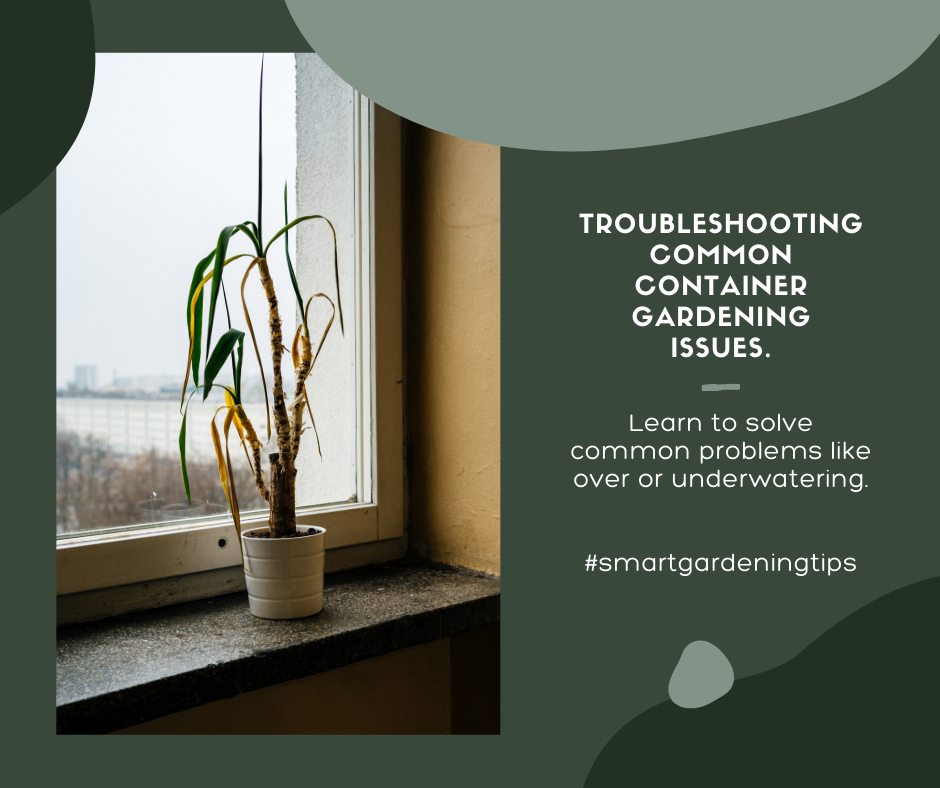
Getting the watering balance right is crucial for container gardening. Overwatering can lead to root rot, while underwatering can cause plants to wither and die. Check the soil moisture regularly by sticking your finger about an inch into the soil. If it feels dry, it’s time to water. If it feels wet, hold off on watering. Adjust your watering schedule based on the specific needs of your plants, taking into consideration factors like temperature and humidity.
Nutrient Deficiency
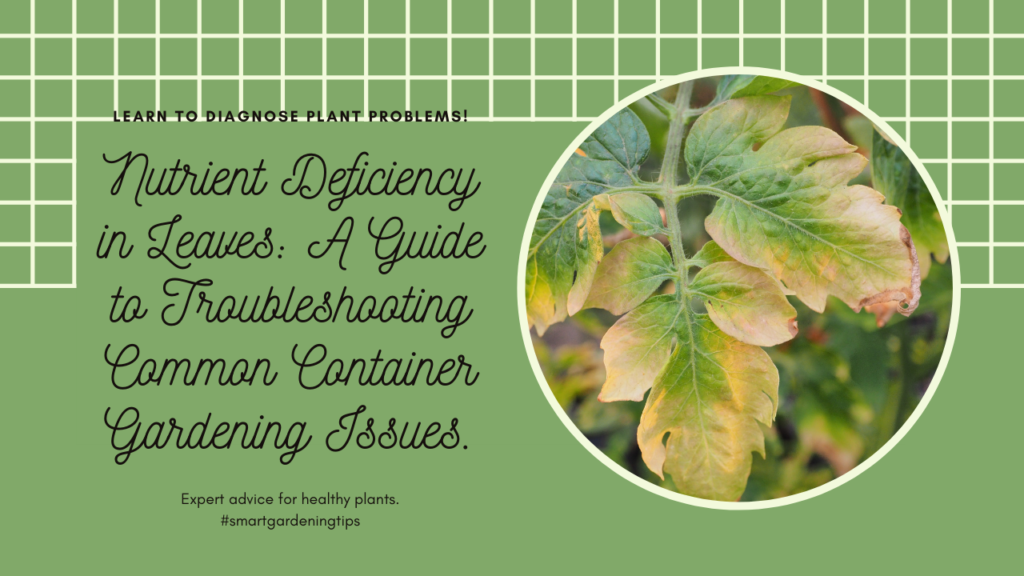
Container plants rely on you for their nutrients, as the limited space restricts their access to natural sources. Fertilize your plants regularly with a balanced, slow-release fertilizer or organic compost to ensure they receive essential nutrients. Pay attention to signs of nutrient deficiency, such as yellowing leaves or stunted growth, and adjust your fertilization regimen accordingly.
Weather Extremes
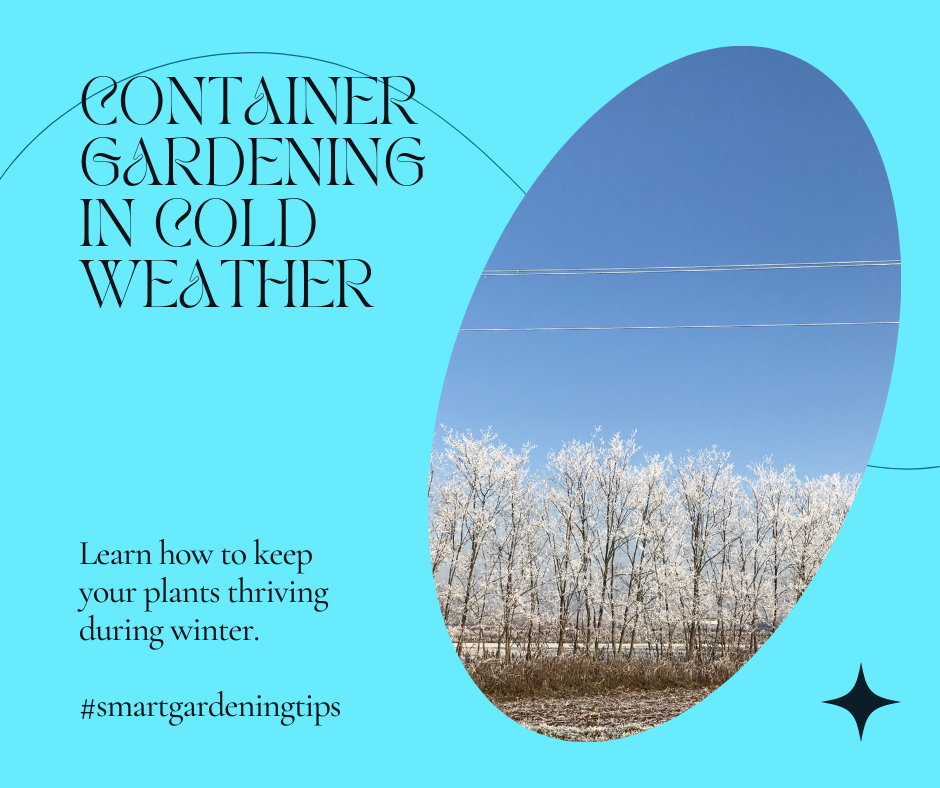
Container gardens are more susceptible to extreme weather conditions due to the limited soil volume. During hot summer months, provide shade or move sensitive plants to cooler locations. In colder climates, protect your plants from frost by bringing them indoors or providing insulation. Monitoring weather forecasts and taking proactive measures can help prevent damage caused by weather extremes.
By addressing these common container gardening issues promptly and implementing the suggested solutions, you’ll be well-equipped to tackle any challenges that come your way. With a little patience, care, and troubleshooting knowledge, you can ensure the health and vibrancy of your container garden year-round.
FAQ
Q. What are the essential supplies for container gardening?
A. The essential supplies for container gardening include containers, potting soil, fertilizers, watering cans, pruning shears, and gardening gloves. These supplies will provide you with everything you need to get started and maintain your container garden.
Q. How do I choose the right containers for my garden?
A. When choosing containers for your garden, consider the size and material. Select containers that are appropriate for the size of your plants and allow for proper root growth. Additionally, consider the material of the containers—options include terracotta, plastic, or ceramic—depending on the plants’ needs and your preferences.
Q. What are the benefits of using different container types for various plants?
A. Different container types offer various benefits for different plants. For example, terracotta containers allow for better air circulation and moisture regulation, while plastic containers are lightweight and retain moisture. It’s important to select the appropriate container type to promote healthy and vigorous plant growth.
Q. How important is soil quality for container gardening?
A. Soil quality is essential for container gardening as it directly affects the health and growth of your plants. It’s important to use high-quality potting soil with adequate drainage and nutrient content. Avoid using regular garden soil, as it may be too heavy and compact for container plants.
Q. How do I choose the right fertilizer for different plants?
A. The choice of fertilizer depends on the specific needs of your plants. Some plants may require a balanced fertilizer, while others may benefit from specialized fertilizers, such as those high in nitrogen for leafy greens or phosphorus for flowering plants. Read the labels on fertilizers and choose accordingly to meet your plants’ needs.
Q. What are the essential tools for container gardening?
A. The essential tools for container gardening include a trowel, hand pruners, a watering can or hose, a dibber, and gardening gloves. These tools will help you with planting, pruning, watering, and general maintenance tasks.
Q. How do I select the perfect plants for my container garden?
A. Selecting the perfect plants for your container garden involves considering their light requirements, growth habits, and overall suitability for container cultivation. Choose plants that thrive in the available space, sunlight levels, and the size of the containers you have.
Q. What are the proper watering and drainage techniques for container gardening?
A. Proper watering involves monitoring soil moisture levels and watering when needed, ensuring even distribution of water throughout the container. Adequate drainage is also crucial to prevent waterlogged roots. Use containers with drainage holes and add a layer of rocks or gravel at the bottom to facilitate drainage.
Q. How can I maintain and enhance my container garden?
A. To maintain your container garden, regularly check for pests, prune as needed, and fertilize according to the plants’ requirements. Enhance the aesthetics by incorporating colorful annuals, mixing different plant heights and textures, and adding decorative elements such as trellises or plant stands.
Q. What are some common issues with container gardening, and how can I troubleshoot them?
A. Common issues in container gardening include overwatering, underwatering, nutrient deficiencies, and pest problems. To troubleshoot these issues, adjust your watering schedule, ensure proper drainage, provide adequate nutrients through balanced fertilization, and promptly address pest infestations with appropriate organic or chemical controls.
Conclusion
In conclusion, container gardening offers a versatile and rewarding way to grow plants, even in limited spaces. By following the tips and utilizing the essential supplies mentioned in this article, you’ll be well on your way to creating a flourishing container garden. Whether you have a small balcony, a rooftop, or a tiny backyard, container gardening allows you to bring nature closer to you and enjoy the beauty and convenience of gardening.
With the right containers, quality soil and fertilizers, essential tools, and proper watering techniques, you can create an oasis of lush greens and vibrant flowers right at your doorstep. Not only does container gardening provide the opportunity to showcase your creativity and personal style, but it also allows you to easily adapt your garden to your changing preferences or seasonal favorites.
So why wait? Start your container gardening journey today and experience the joys of nurturing and witnessing the growth of your own little green oasis. Whether you’re a seasoned gardener or a beginner looking for a new hobby, container gardening offers endless possibilities and rewards. So grab your trowel, select your favorite plants, and let your container garden thrive!


